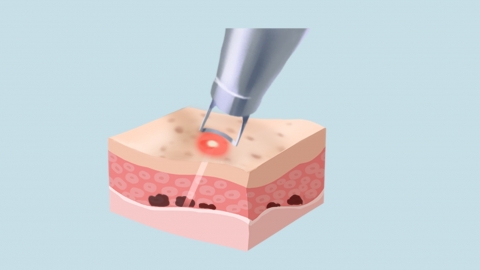How to completely cure skin hemangioma
Skin hemangiomas require individualized treatment plans based on the specific condition of the lesion. Common treatment options include local injection therapy, laser therapy, surgical excision, oral medication, and cryotherapy. Standardized treatment can effectively eliminate the lesion and reduce the risk of recurrence. If a skin hemangioma rapidly enlarges, ulcerates, or affects appearance or function, prompt medical attention is recommended.
1. Local injection therapy: Sclerosing agents or anti-tumor drugs are injected directly into the hemangioma to inhibit the proliferation of vascular endothelial cells and promote vessel occlusion, leading to shrinkage and regression of the hemangioma. This method is suitable for small to medium-sized superficial hemangiomas and allows precise targeting of the lesion.
2. Laser therapy: Utilizes the photothermal effect of specific wavelength lasers to destroy blood vessels within the hemangioma, promoting necrosis and absorption of the lesion. Recovery after laser treatment is relatively quick, making it ideal for superficial skin hemangiomas while minimizing damage to surrounding healthy tissue.

3. Surgical excision: Involves direct removal of the hemangioma and surrounding affected tissues. This approach is best suited for hemangiomas with well-defined borders, large size, or potential for malignant transformation. It enables complete removal of the lesion in a single procedure. Postoperative wound care is essential to prevent infection.
4. Oral medication: Involves administering corticosteroids or targeted drugs orally to suppress hemangioma growth and promote regression. This is commonly used for extensive or deep hemangiomas in infants and young children. Dosage must be carefully managed under medical supervision, with regular monitoring for adverse drug reactions.
5. Cryotherapy: Uses extreme cold to induce tissue necrosis and shedding of the hemangioma. It is appropriate for small, superficial skin hemangiomas and offers a simple treatment process. However, freezing depth must be carefully controlled to avoid scarring.
In daily life, maintain cleanliness of the area affected by hemangioma, avoid scratching or friction that may cause injury, apply sun protection when outdoors, minimize ultraviolet exposure to the lesion, and follow up regularly as instructed by your doctor to monitor skin recovery after treatment.





